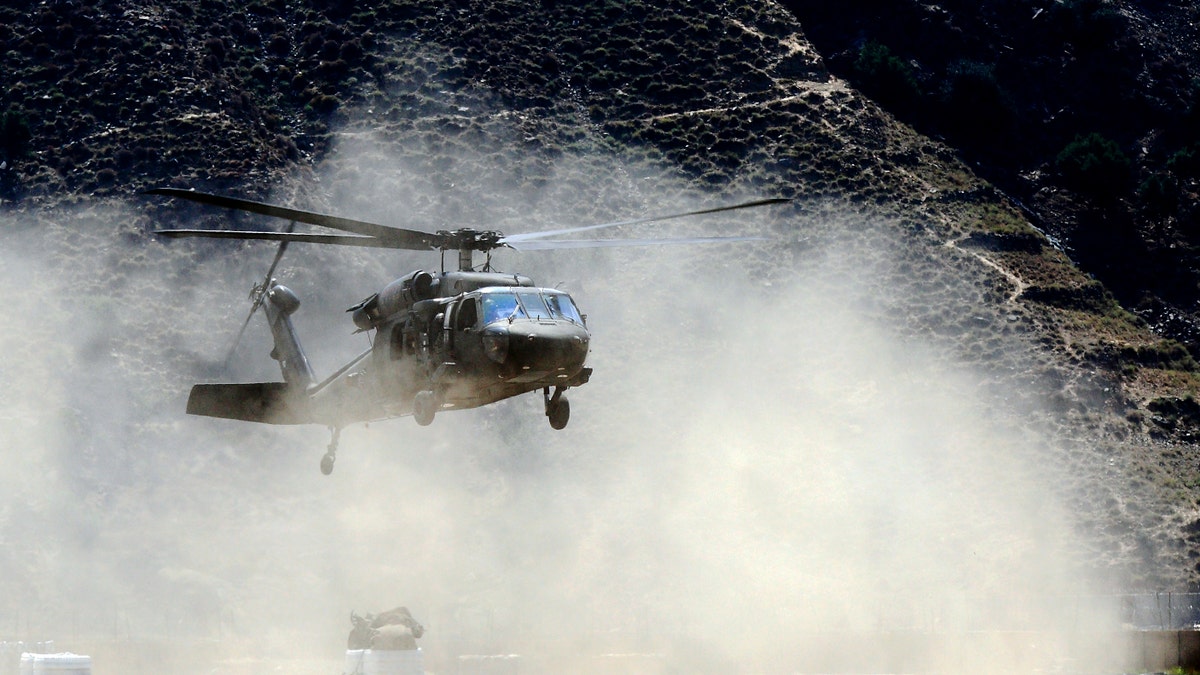
File photo - A U.S. Army Black Hawk helicopter lands at FOB Bostick in eastern Afghanistan's Naray district, Kunar province August 23, 2011. (REUTERS/Nikola Solic)
New technology means U.S. military helicopter pilots will be getting amped-up ‘Superman-style’ vision to help them tackle dangerous environments.
One of the biggest threats to aircraft is Degraded Visual Environment or DVE.
New technology made by Honeywell aims to solve this problem.
Superman’s vision lets him see through things and observe high detail. DARPA, the Defense Advanced Research Projects Agency, has issued a contract to Honeywell to create tech enabling helicopter pilots to deal with extreme DVE and “See” crucial details. The tech is called synthetic vision. Honeywell has been developing and testing it with DARPA for more than nine years.
Related: DARPA's unmanned sub-hunter set to revolutionize naval warfare
U.S. Military helicopters like the UH-60 Black Hawk will be outfitted with the Synthetic Vision Avionics Backbone (SVAB) for testing.
The threat
When visibility is degraded it can mask hazards lurking in bad weather like rain, snow, dust and fog. These challenges can cause low visibility, making it tough to land and fly.
“Brown-out" is a condition that military pilots regularly face when terrain becomes obscured, particularly in desert conditions such as those experienced in Iraq and Afghanistan.
Related: High-tech sponge can save lives in less than 20 seconds
When a pilot approaches a landing zone in a desert environment it often becomes a brown out when sand, dirt and dust gets kicked up. In a brown-out, the pilot loses his or her visual reference with the ground. The airframe can drift and collide with the ground or other structures causing the helicopter to land hard or even roll over.
How does it work?
Honeywell's technology provides pilots with a 3-D view of the landing zone on their flight displays. The synthetic vision system integrates data from a number of state-of-the-art sensors. These data are fused together, processed and translated into a picture of the area around the pilot.
The technology aims to show dangers like other aircraft, telephone wires, vehicles and personnel near the landing zone as well as unexpected terrain hidden by dust or other aspects of DVE.
Related: Could the US deploy 'cyborg' troops?
Ultimately, military pilots could have such enhanced vision that even small holes and ditches around the landing zone will be revealed.
The tech could help save lives as well as reduce costs. Pentagon research estimates place the damage and loss of U.S. military aircraft due to degraded visual environments in the hundreds of millions of dollars.
Many companies have been trying to find a solution to DVE. Tech touted to tackle the problem includes millimeter wave radar, infrared radar, long wave and LIDAR, a laser-based surveying technology.
Related: Air Force, Marines, bolster air power with major Super Hercules deal
Advanced military aircraft like the CH 47 F-model Chinook, AH-64 Block III Apache attack helo and the Black Hawk UH-60 M-model already give pilots enhanced support when equipped with cutting edge moving map displays and digital flight controls.
How does it work?
In the next phase of the Multifunction Radio Frequency program, Honeywell will update the synthetic vision system to fuse information from DARPA's Advanced Rotary Multifunction Sensor radar, along with satellite imagery and databases of terrain and obstacles.
DVEs are a big challenge for all militaries, but with this technology US pilots would have the advantage of being able to safely operate where others cannot.
